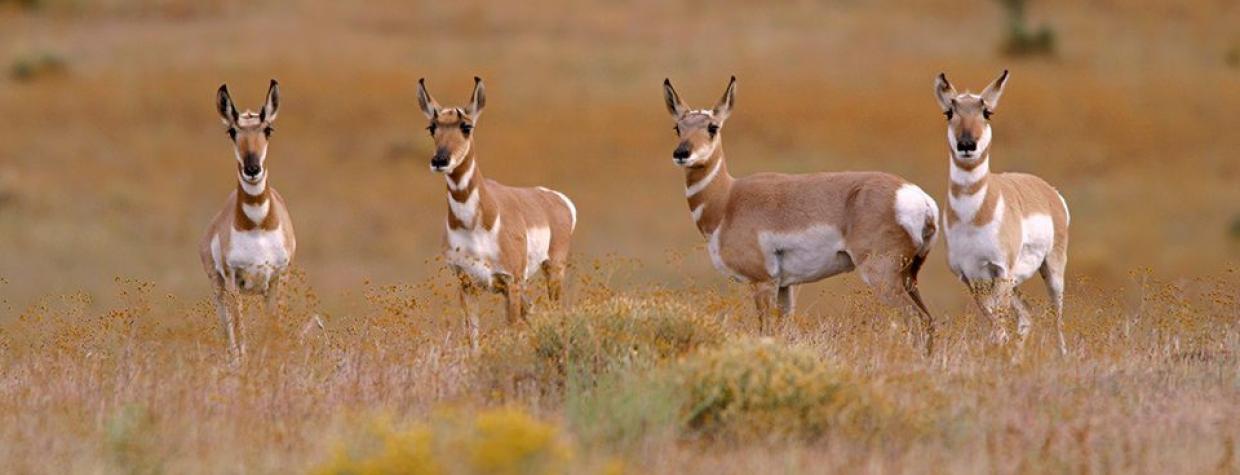It's possible the pronghorn is getting tired of everyone calling it an antelope. Or maybe it's just thankful to be alive — the pronghorn is the last surviving species of the Antilocapridae family; four others existed when humans came to the North American continent but are now extinct. The pronghorn's closest living relatives are in Africa, but they're not antelopes: They're giraffes and okapis.
Regardless of what you call them, pronghorns are found primarily in grasslands from Southern Canada to Northern Mexico. First brought to scientific notice by the Lewis and Clark Expedition, the pronghorn has very large eyes, giving it a 320-degree field of vision. The male's prominent horns on the top of its head are branched, unlike those of true antelopes. And the pronghorn is built for speed. To outrun predators, it's been known to sustain a 55 mph pace for a half-mile, and it's often cited as the world's second-fastest land animal, behind the cheetah. It isn't much of a jumper, though, and rural fences often restrict its movement.
Cougars, wolves, coyotes and bobcats are the major predators of the pronghorn, which forms mixed-sex herds in the winter and breaks into male and female groups for mating season. An adult male will defend a fixed territory and invite females to enter, or it'll defend a harem of females from other suitors. Clearly, you can't call the pronghorn monogamous. Nor can you call it an antelope.

